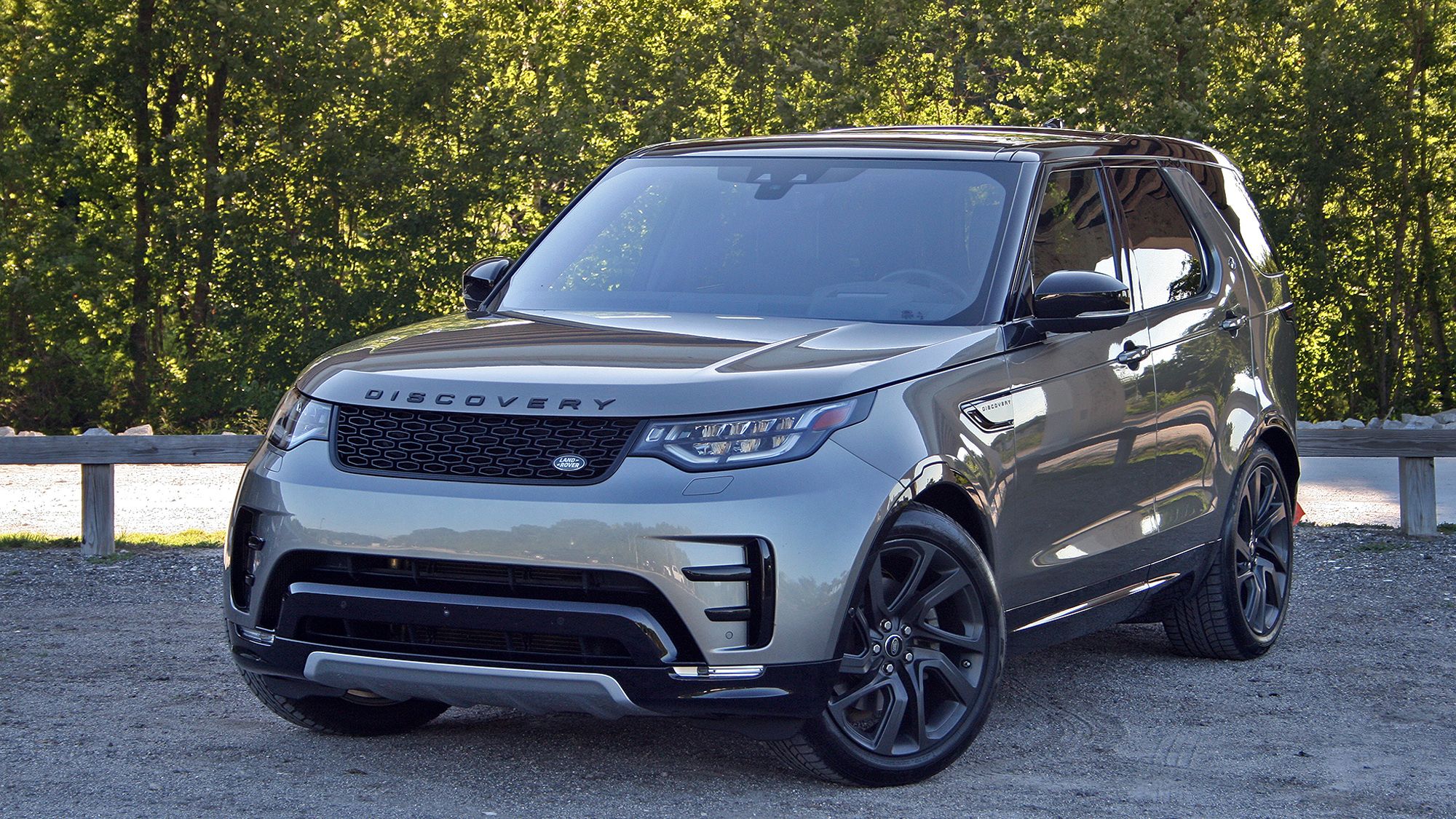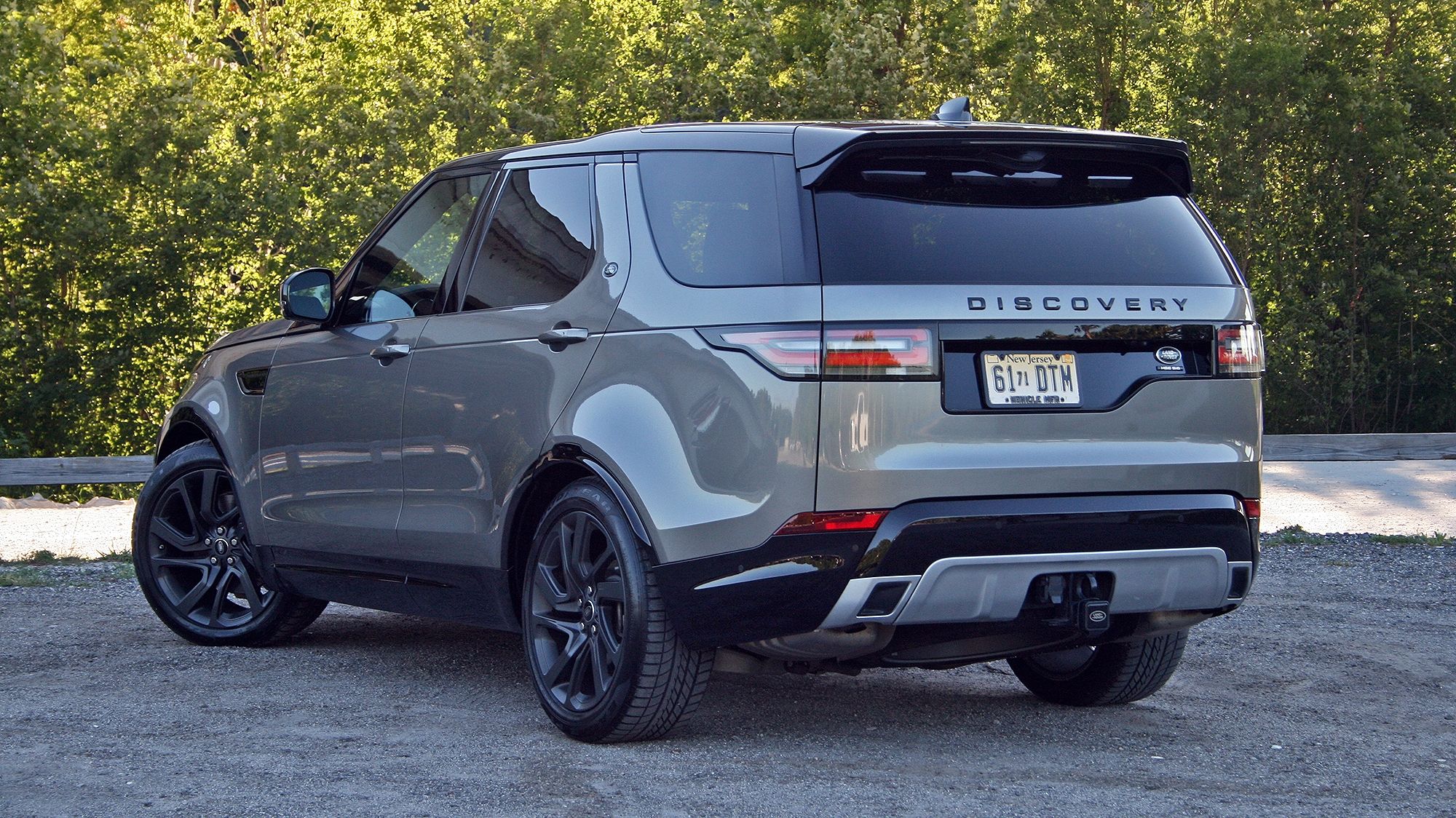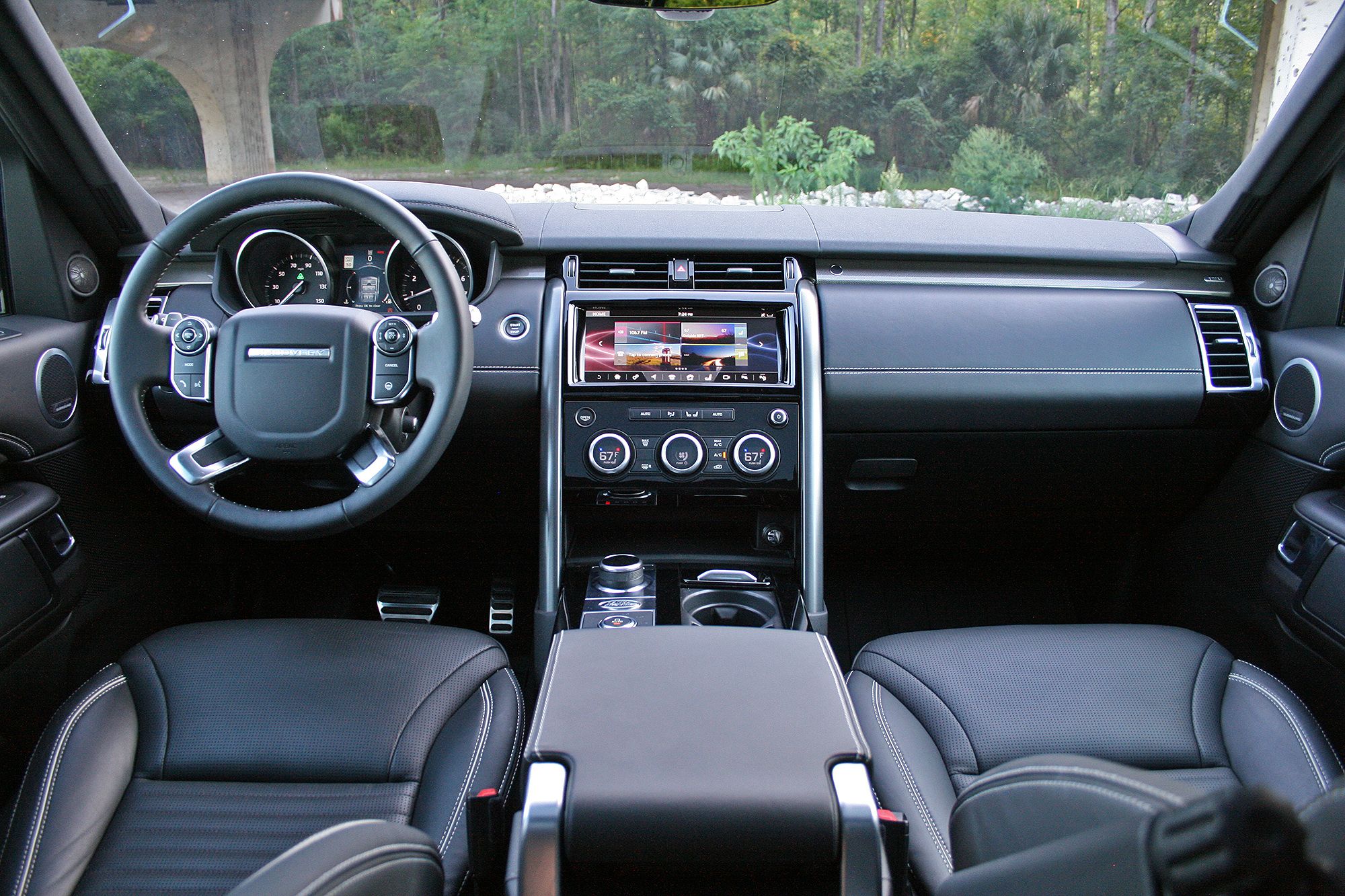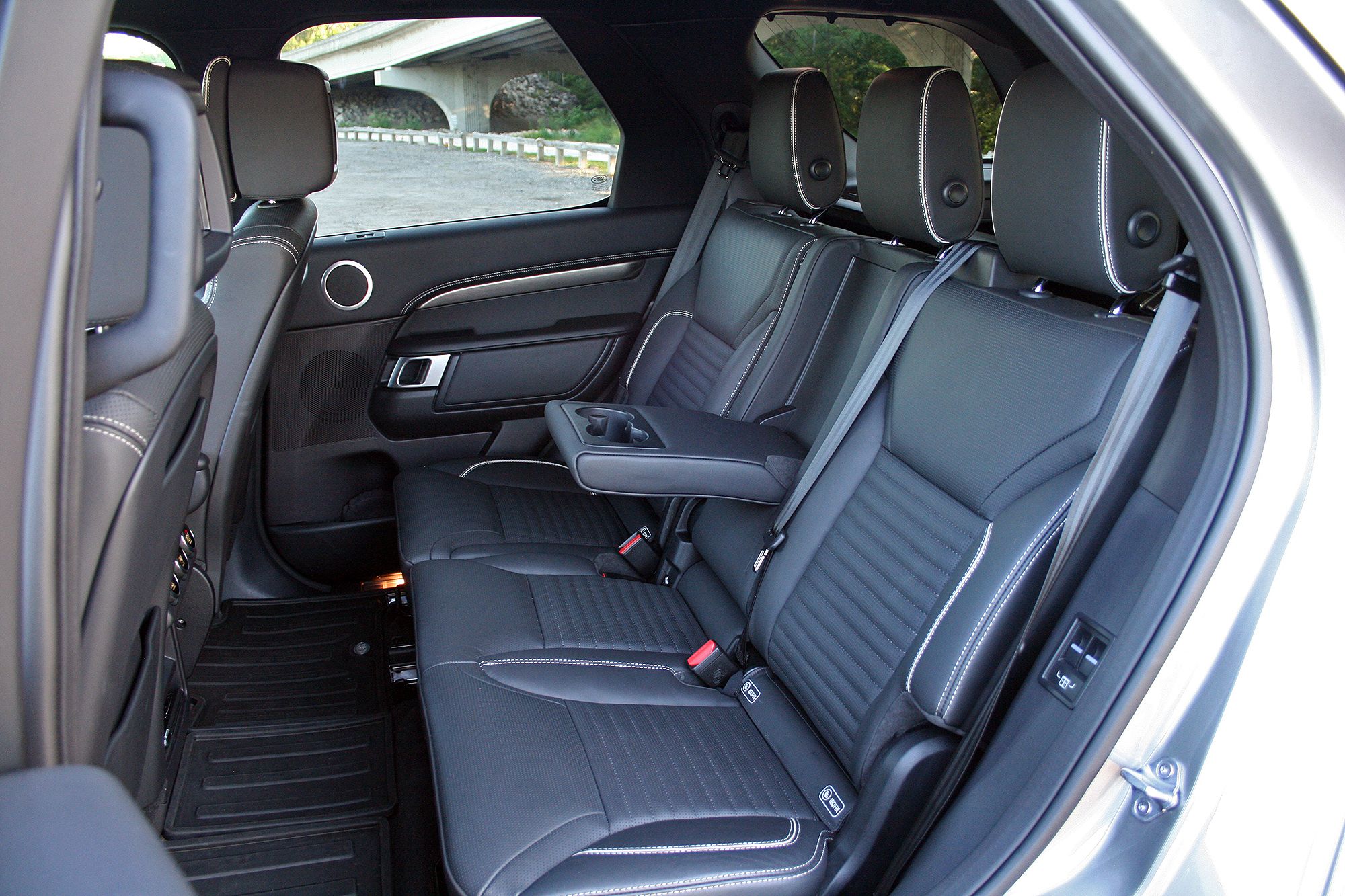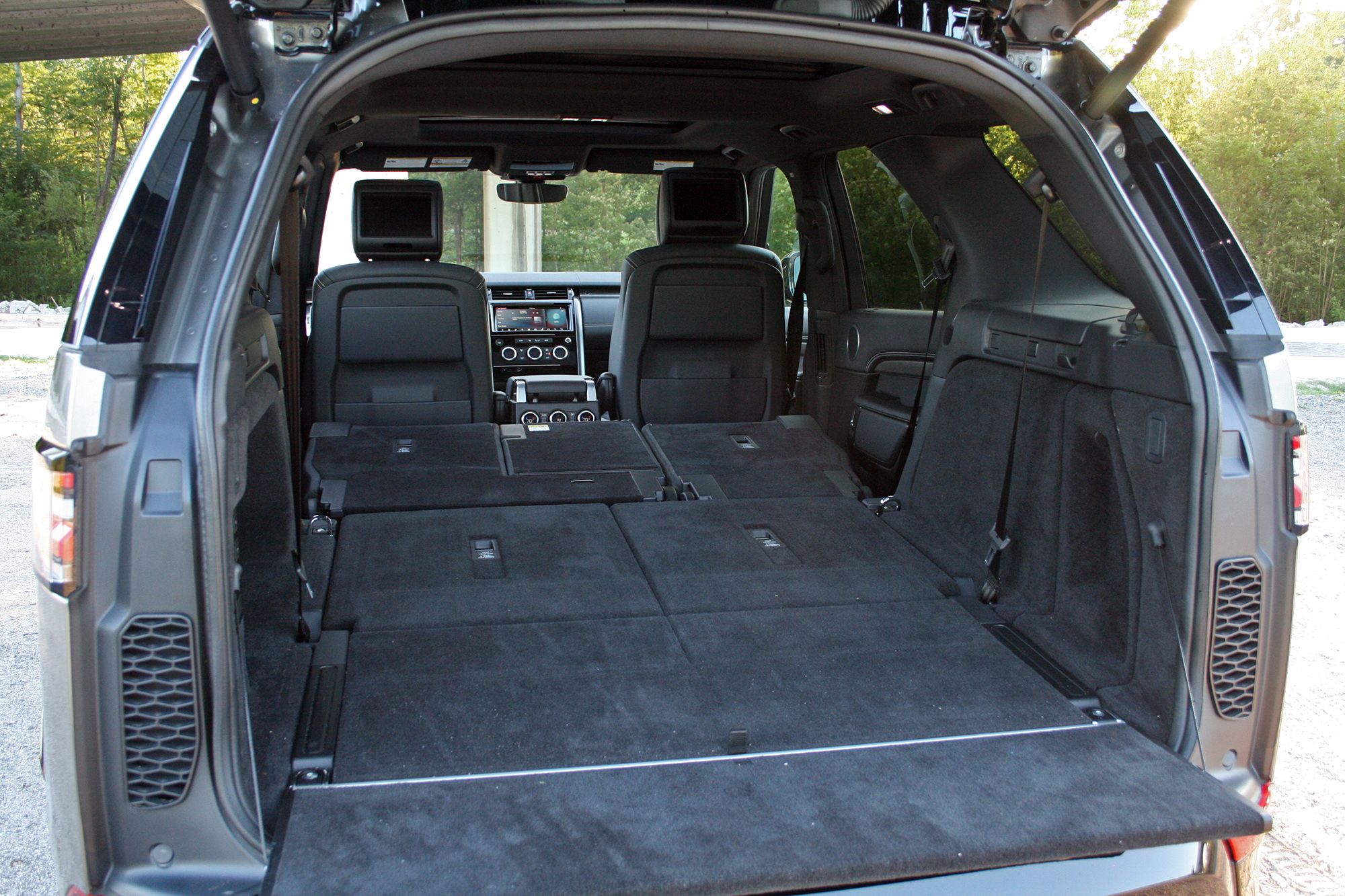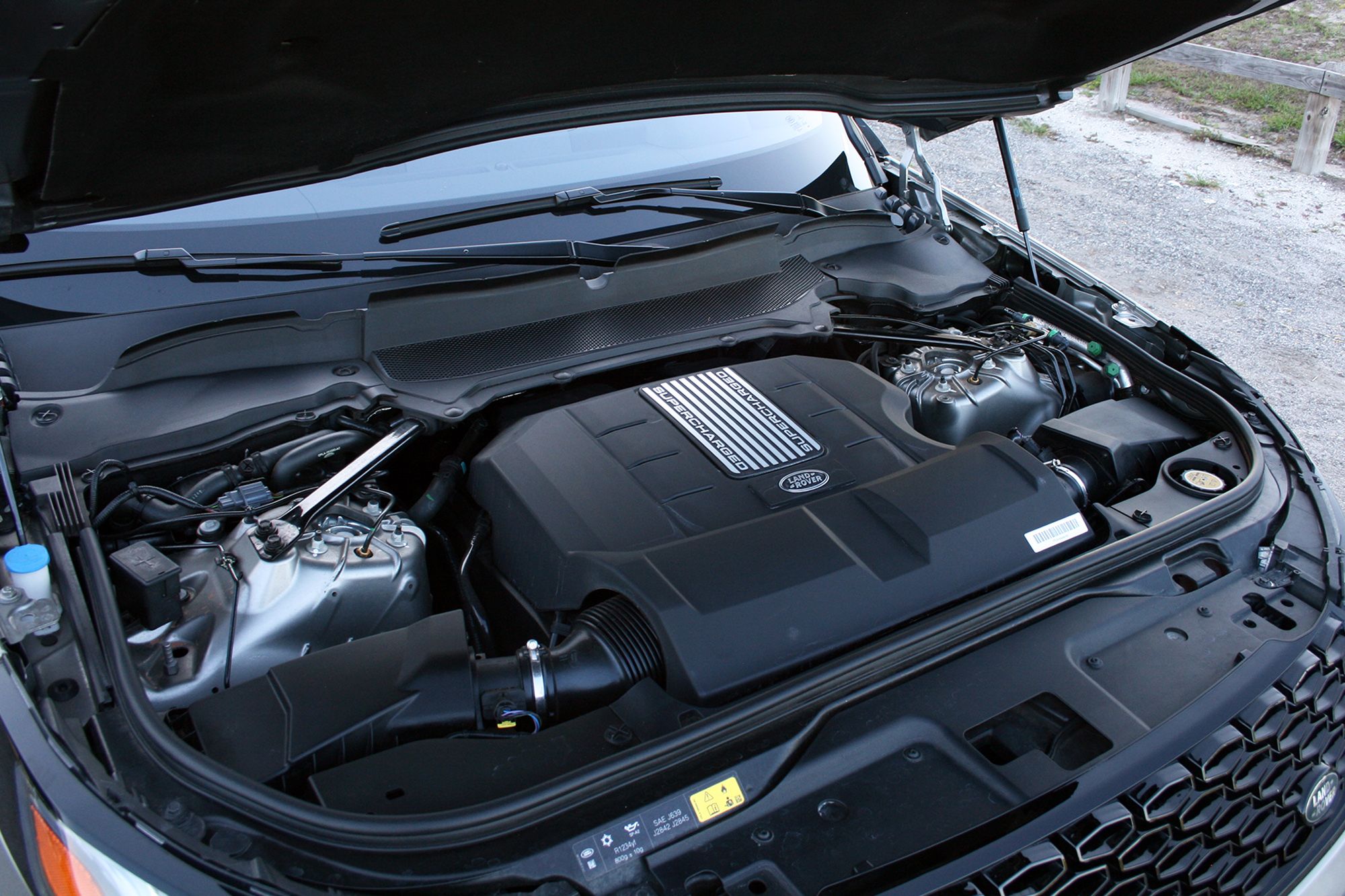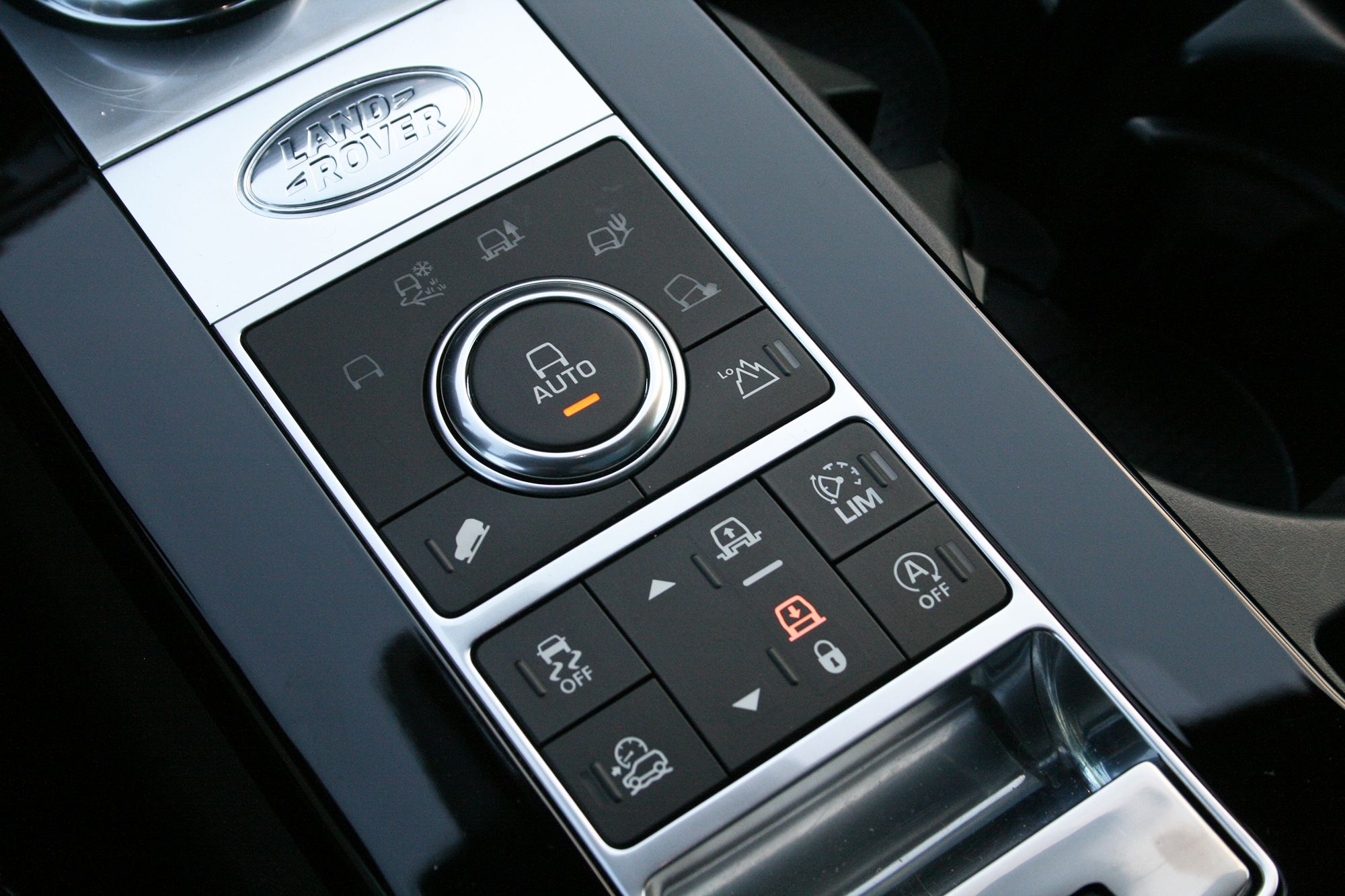The wait is over – we’ve gotten behind the wheel of Jaguar Land Rover’s all-new 2017 Land Rover Discovery. This is the fifth-generation of the Discovery name, but this SUV drastically departs from decades of heritage of past models, including the LR4 sold between 2009 and 2016. Gone is the traditional steel ladder frame and boxy design, replaced by an advanced, aluminum-intensive unibody structure and curvy, modern styling. The Discovery’s new bones are based on those found under the Range Rover and Range Rover Sport. Not surprisingly, the Disco feels very similar from behind the wheel.
Purists might shed a tear in their beer at the Discovery “going soft,” but they needn’t worry. It possesses all the same off-road chops as the other Land Rover models, including center and rear locking differentials, an air suspension allowing for 11.1 inches of ground clearance, and watertight seals that afford an impressive 35.4 inches of wading depth. Sure, its leather-lined interior might not be suitable for quail hunting with the Labradors, but neither was the LR4’s. Rather than holding onto the past, Land Rover is wholeheartedly adopting the future. Customers demand more in-car technology, better driving characteristics, more comfort for every seating position, and that up-market cache the Land Rover brand has come to symbolize. As for those behind-the-wheel impressions; keep reading for those.
Continue reading for more information.
Behind the Wheel
I’ve driven four examples of the current Land Rover Range Rover. Three of them were long-wheelbase models and all were trimmed in the luxurious Autobiography package. What they all have in common is the solid yet fluffy character. The steering isn’t too heavy or too soft – weighted just fine for Goldilocks. The same is true for the brakes. The throttle is lovely with the supercharged 5.0-liter V-8 underfoot. Body roll is present when driven hard, but does not detract from a good experience around town.
Why am I talking about the Range Rover? Because the same is true for the 2017 Land Rover Discovery. Well, mostly.
The Discovery shares much of these same characteristics behind the wheel. It’s hard not to figure out why, of course. From the steering wheel itself to the familiar dash layout and materials, the Discovery was clearly modeled after other Land Rover products. On the road, the air suspension soaks up bumps in much the same way. Road noise is equally relegated to faint white noise in the background. Outward visibility is simply impeccable thanks to the tall windows and massive front windshield. The low-slung dashboard and cowl help, too.
The biggest difference between the Range Rover and the new Discovery is the engine. Where the ‘Rovers get JLR’s supercharged V-8, the Discovery is limited to two V-6 options. Neither are bad, but neither pump out 500+ horsepower, either. The Disco’s standard engine is the supercharged 3.0-liter V-6. Like the V-8, this all-aluminum engine is found all across the Jaguar Land Rover lineup. In the Discovery, it makes 340 horsepower and 332 pound-feet of torque. Optionally, the 3.0-liter V-6 turbodiesel is available on the upper HSE and HSE Luxury trims. The oil-burner makes a diesel-like 254 horsepower and a stump-pulling 443 pound-feet of torque.
My tester’s gasoline V-6 proved plenty peppy enough for hauling the Discovery’s 4,900 pounds around town and through deep sugar sand. Land Rover says it will hit 60 mph in 6.9 seconds and tow an 8,201-pound trailer.
As for that sugar sand, I took my Discovery tester to an open field full of fine Florida sand. Engaging Sand Mode and Off-Road Ride Height on the Terrain Response 2 system puts the powertrain and suspension in the optimal settings. The center differential partially locks up, splitting power between the front and rear axles depending on which one needs it. The rear differential is fully locked, making the back tires turn at equal speeds. Despite the street-biased Goodyear Eagle F1 SUV 4x4 tires and 21-inch wheels, the Discovery just plowed through the loose sand like it was nothing.
Best of all, a few button-presses transforms the Discovery into a highway bomber capable of making 80 mph feel like 50. The air suspension is definitely a work of engineering excellence. Overall, the 2017 Land Rover Discovery is something special. Its relation to the far-pricier Range Rover isn’t lost, yet its $49,990 starting price means it’s obtainable for most upper-middle class folks wanting something more capable than a Chevy Suburban or Ford Expedition.
Stick around for more hands-on experiences with the 2017 Land Rover Discovery.

